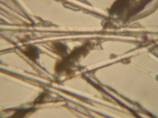News / Green
Fiberglass Insulation Fibers: Advantages and Limitations
OSHA regulates fiberglass particles as a nuisance dust since 1991 and some agencies and states list them as a potential carcinogen.

Fiberglass is a type of fiber primarily composed of glass that is used in a wide variety of applications, and is predominantly used as a residential and commercial thermal insulator. As an insulator, it maintains a resistance to the spread of heat (known as the R-Value), cold and sound in structures, vehicles, aircraft, etc. By trapping pockets of air, it keeps areas warm in the winter and cools in the summer and thereby serves as a excellent way to increase energy conservation all the while maintaining comfort.
Glass has been woven into small amounts of coarse fibers for many centuries, even by the ancient Egyptians, but fiberglass did not exist in its modern (insulation) form until 1932 as a result of an accident. An Owens-Illinois researcher named Dale Kleist was attempting to create a vacuum-tight seal between two glass blocks when a jet of high-pressure air turned a stream of molten glass into fine fibers. He had unintentionally discovered an effective method to produce large amounts of fiberglass particles, a method that he would refine in later years. In the United States, the first commercial production of fiberglass was started by Illinois Glass Company and the Corning glass work in 1939.
The main sources of fiberglass particles in indoor environments includes, but are not limited to, ceiling tiles, debris from renovation projects, or degradation of HVAC system liners. These particles are very important from health and hygiene point of view. OSHA regulates fiberglass particles as a nuisance dust since 1991 and some agencies and states list them as a potential carcinogen. Health implications from these particles may vary depending on the fiber size and type of exposure. Skin/eye irritation, rashes, soreness in nose and throat, asthma like symptoms, upset stomach etc. are some common symptoms due to contact, inhalation and ingestion of relatively larger fiberglass fiber although the smaller fragments (less than 0.5 micron) are capable of reaching the lower part of the lungs increasing the chance of adverse health effects. The International Agency for Research on Cancer has classified some fibers used in fiberglass as possible human carcinogens (cancer causing agents).
Under a microscope, fiberglass appears as a smooth-walled, colorless or slightly pigmented surrounding, entire margin, elongated tube-like structure with varying size ranges, 1 to > 1000 microns.
Ideally, there should not be any air or surface-borne fiberglass fibers in indoor environments. An independent study taken by EDLab at Pure Air Control Services Inc., utilizing over 10,000 indoor air samples, reveals that 99% of the air and surface samples collected were deemed negative for the presence of fiberglass fiber. Samples deemed positive for these particles indicated that the concentration of fiberglass fiber is greater in surface samples (up to 176 cts/cm2) in comparison to air samples (66 cts/m3). Additionally, this independent study suggests the concentration of fiberglass fiber in the air should be less than 5 cts/m3 and 4 cts/cm2 in surface samples.
For more information on ordering your DIY Fiberglass Screen Check (FSC) test kits call 1-800-422-7873 ext 404 or visit the web site at www.IndoorAirTest.com.
You can also contact forensic microscopist Dr. Rajiv Sahay, CIAQP, FIAS, Laboratory Director EDLab at Pure Air Control Services 727-572-4550 ext 301.
About Environmental Diagnostics laboratory (EDLab):
Alan Wozniak founded Pure Air Control Services, Inc in 1984 as a small mechanical contracting firm and has since set the industry standard for indoor environmental quality diagnosis, environmental laboratory and remediation. Pure Air Control Services has serviced more than 600 million square feet of indoor environments in over 10,000 facilities.
The Environmental Diagnostics Laboratory (EDLab) (established in 1992) at Pure Air Control Services (PACS) is an AIHA accredited environmental lab offering complete and comprehensive indoor environmental microbiology laboratory services. They include: microbiology, aerobiology, chemistry, allergen assays and microscopy designed to meet all your indoor air needs. EDLab supports IAQ investigations by assisting with strategic sampling plan development and supplying media collection equipment while performing a wide range of environmental analyses.
###
